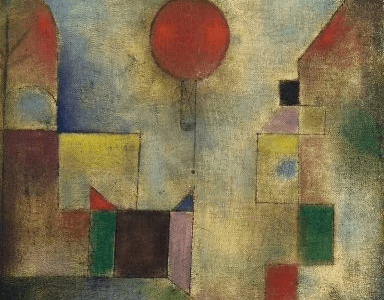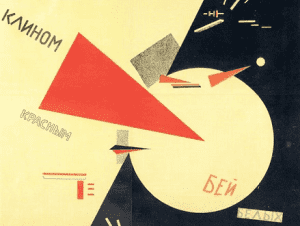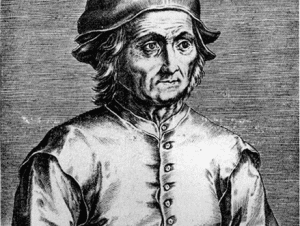Bauhaus Simplified
Weimar, Germany, is famous for the Bauhaus art and design movement that began in 1919. The Bauhaus movement advocated a flat, robotic aesthetic with no historical connections or emotion, and it inspired a wide variety of designers, architects, and artists.
Summary of Bauhaus
Bauhaus, a 20th-century modernist art school, may have been the most significant of all. It closed due to Nazi pressure in 1933, but it’s impact on the US and Europe will continue to be felt for years to come, since the ideas that formed its approach to education and the link between art, society, and technology remain. The Bauhaus movement in the early 20th century was inspired by 19th-century art movements such as the Arts and Crafts movement, Art Nouveau, and the Jugendstil movement.
The Bauhaus attitude was sometimes described as medievalist; its goal was to rebalance the relationship between creative and manufacturing pursuits. In its early years, the Bauhaus designed itself as a kind of craft guild, mirroring its own history in its mission to reintegrate manufacturing with creativity. This approach fell by the wayside in the 1920s, when the Bauhaus placed a premium on integrating art and industrial design, and it was this concept that underwrote the institution’s most creative and impactful endeavours. It has a lot of excellent professors, many of whom became influential figures in contemporary art and thought in Europe and the United States.
The Bauhaus movement began to advocate for new standards in design due to public worries about industrial work and art losing significance in the late nineteenth century. The Bauhaus set out to meld outstanding art with practical design by creating objects that had the appearance of art while yet being functional.
The Bauhaus considered theoretical and intellectual ways of studying their subject matter to be very important, even if they did not pay attention to conventional fine-arts education. The hierarchy of the arts, which had been in place since the Renaissance, was dismantled, and all areas of creative and design instruction were amalgamated. Architectural, interior design, textile, and woodwork crafts were all brought on same footing with fine arts like as sculpture and painting.
Because of its equal focus on craft and art, it is not surprising that the most influential and successful of the Bauhaus’s achievements are in fields like furniture and graphic design, as opposed to painting and sculpture. In the 1950s and 1960s, Marcel Breuer, Marianne Brandt, and other designers created furniture and objects that heralded a movement towards elegant minimalism. Similarly, Walter Gropius and Ludwig Mies van der Rohe were founders of the International Style, which is critical to modern architecture.
Art education nowadays is heavily influenced by the Bauhaus’s approach of experimentation and problem-solving. “fine arts” have been renamed “visual arts” and creative processes have been reimagined as more resembling scientific inquiry than the humanities topics of literature and history.
Why is it Called Bauhaus?
In 1919, Walter Gropius, who served as the first director of the Bauhaus school, founded the organisation after uniting two of the area’s art institutions, the Weimar Academy of Arts and the Weimar School of Arts and Crafts. He used the name Bauhaus, which is German for “house of building,” because it was an inversion of the term Hausbau, which means “house building.” Gropius’ “House of Building”
Everything About Bauhaus
The Beginnings of Bauhaus
Founded in 1919 in Weimar, Germany, by architect Walter Gropius, the Bauhaus — a word which translates to “house of building” in German — was originally established as a new way to apply progressive theories in art and design. He founded the revolutionary design school in 1919 after joining together the Grand-Ducal Saxon School of Arts and Crafts (where he was the director from 1915-1918) and the Weimar Academy of Fine Art (where he served as the headmaster from 1914-1916). In their quest to merge beautiful and practical art, to oppose creativity’s mechanisation, and to make better educational options available, the Bauhaus movement started during the late nineteenth century.
The Bauhaus’s merger of artistic and mechanical design was also spurred by the emergence of Russian constructivism in the 1910s, which served as a better example than the already established Italian Futurist and German Expressionist styles. When it debuted in 1920, the Bauhaus started in the former sculpture studio of the Grand-Ducal Saxon School, a building designed by the penultimate director of the school, Henry van de Velde, in the Art Nouveau style.
Gropius was one of the main advocates for the value of craft and technical knowledge. The Bauhaus viewed him as encompassing all creative forms, including fine arts, industrial design, graphic design, typography, interior design and architecture.
Concepts in Bauhaus
The school’s astounding and significant teaching methods served as the centrepiece of its overall approach. The wheel in Gropius’ illustration is represented by concentric rings, with the outer ring symbolising the vorkurs, or “basic course,” that was designed by Johannes Itten and focused on basic design elements such as contrasts between different shapes, colours, and materials. Two centre rings symbolised the structure of formlehre, which emphasised form and problems that come along with it, and werklehre, a structure of workshops and practical instruction that focuses on technical crafts and skills.
The lectures focused on the practical use of fundamental geometric forms, which were critical to modernist architecture and design in subsequent decades, with the emphasis on how easy it was to reproduce geometric designs. The different categories in the wheel included both traditional building design, as well as things like architecture, engineering, and construction. Construction was centred around its traditional building design teaching students the basics of architectural design, engineering, and construction but with an emphasis on personal skill and workmanship. To reduce any sense of competitiveness and foster learning by working in groups and giving a sense of a communal learning environment, the programme was used for all classes.
The design and implementation of the curriculum was in the hands of Gropius’s teachers, who were extremely talented. When Gropius was named head of the Bauhaus, he chose his old friends and colleagues Johannes Itten, Lyonel Feininger, and Gerhard Marcks to join him at the school. Itten was particularly crucial to the Bauhaus’ early ethos, and he was most influential in establishing the first focus on romantic medievalism; he was personally responsible for the first iteration of the vorkurs, which had a lot of that romantic medievalism influence. He notably had opposite preferences compared to Gropius in terms of Expressionism and erudition, which caused the two to immediately begin to disagree.
Even though Moholy-Nagy had come on board as a good match for Gropius, it was soon clear that Itten, who had preceded Moholy-Nagy, was more of a kindred spirit for Gropius. So he rebuilt the vorkurs into a plan that embraced technology and the social function of art. Despite absorbing a lot of different aesthetics during its short existence, the Bauhaus also stood apart from many of its contemporaries. Although some scholars associate the Constructivist movement with the contributions of individuals like Moholy-Nagy, early on in Constructivism’s existence, the movement featured Expressionist artists like Kandinsky and Klee. In addition, they had Georg Muche and Oskar Schlemmer there, both working in media including sculpture and dance.
After a long stretch of success in Weimar, The Bauhaus relocated to the industrial town of Dessau in 1925 and set out on its most successful period of activity. Gropius was the person who designed the Bauhaus, and he introduced a whole new kind of design and architectural ethos that will be associated with the school forevermore. It also has an architecture department here; one that was previously nonexistent. Gropius was both exhausted and under attack in 1928, as he’d become tired of the constant bickering with those opposed to him, which included traditionalists in German culture. He left the project and gave it to Hannes Meyer, a Swiss architect.
Meyer, the department head of the architectural programme, was a zealous communist who injected his political convictions into his mentoring, as well as in courses and tutorials. Meyer was dismissed from his post as director in 1930 because his brand of Marxism was becoming more unpopular. The school’s stature had increased in the meanwhile, but his socialist views still caused him problems. After the Nazis gained control of the town and local elections were held, the school was closed and moved to Berlin, where it operated for one more year until its termination.
Berlin architect Ludwig Mies van der Rohe, a famous proponent of functionalist architecture and therefore closely connected with the International Style, oversaw the reviving of the Bauhaus under its new director, Walter Gropius. Mies van der Rohe was placed in a difficult situation by his previous colleagues, who had exhausted many of their best design skills and made few new resources available to him. While wanting to separate school-learning from politics, this short-lived push to redesign the education system ultimately fell down, and his institute was shut down by Nazi government censors when they took control of the whole country in 1933.
The End of Bauhaus
The Bauhaus’ influence, of which faculty members experienced in the decades after it closed, had a significant impact on the design community both inside and outside of Europe, with many having to leave the continent as Fascism became oppressive. Gropius became known as the pioneer of International Style architecture when he moved to the United States in 1937 and became a professor at Harvard University’s Graduate School of Design. Gropius had an equally influential influence on Mies van der Rohe, who joined him at the Illinois Institute of Technology the same year that he had come in the United States, where he became Director of the school’s School of Architecture, Planning, and Design.
Four years before, Josef Albers was hired as the Director of the Painting School at prestigious Black Mountain College in North Carolina, and Robert Rauschenberg and Cy Twombly were among his pupils. Jewish Hungarian László Moholy-Nagy fled Germany in 1933 and created the Institute of Design in Chicago.
After World War II, the Hochschule für Gestaltung was founded in Ulm in 1953, reviving the national heritage of the Bauhaus. The university was seen as the continuation of the Bauhaus since Max Bill, a former Bauhaus student, became its first rector. Bill, Moholy-Nagy, and Albers were instrumental in influencing the Bauhaus philosophy to be applied to a new age. Specifically, Moholy-Nagy and Albers redefined the movement as being more pertinent to a modern research university working in a market-oriented culture. Bill influenced geometric abstraction, the successor movement to Constructivism, which spread worldwide.
Key Art in Bauhaus
Red Balloon
By Paul Klee
1922

Paul Klee was a visionary whose work combined stunning formal innovation with a strange kind of primordial innocence. He was one of the most talented and enigmatic artists associated with the Bauhaus, a visionary whose work combined stunning formal innovation with a curious kind of primordial innocence. Delicate, transparent geometric forms – squares, rectangles, and domes – are picked out in gradations of primary colour in this 1922 painting. A solitary red circle hovers in the upper middle, revealing itself to be the titular hot-air balloon upon closer study. Klee’s playful, associative use of the geometric compositional groupings for which the Bauhaus became famous is shown by this illustrated flourish.
Yellow-Red-Blue

1925
This intricate piece is organised around three distinct visual regions, each of which is dominated by yellow, red, or blue forms. These, in turn, constitute two main visual focus zones, one on the right-hand side of the canvas, made by the interlocking red cross and blue circle, and one on the left, formed by the yellow rectangle embossed against a darker shade of ochre. Color and shading effects imply variation in perceptual weight and placement in space, as the buoyancy of the yellow contrasts with the deeper red tones, extending further into purple and blue.
Bauhaus building in Dessau, Germany
By Walter Gropius
1919-1925

This famous building captures the spirit of Bauhaus architecture, with its austere rectangular design, glass-curtain walls, and unique vertical emblem stretching up one side, and foreshadows many of the advancements that would arise from it in the years to come. Gropius’ “innovative use…of industrial sash, glass curtain walls, and an asymmetrical pinwheel design forged an unforgettable path in the development of what we now call modernism and the International Style.” noted architectural critic Lee F. Mindel.
Light Prop for an Electric Stage (Light Space Modulator)
By László Moholy-Nagy
1930

Moholy-Nagy partnered with the engineer Istvan Sebok, the technician Otto Ball, and the theatrical lighting department of the German electric firm AEG to develop and execute this motorised sculpture, which was dubbed a “twentieth-century utopian icon” by art critic Peter Schjeldahl. The work’s creative use of contemporary materials, which was originally intended for commercial usage in theatres, exemplifies the Bauhaus emphasis on mass production, the machine aesthetic, and the use of modern technology to produce practical art. His Light Prop, according to the artist, was created for “creating special lighting and motion effects”
Information Citations
En.wikipedia.org, https://en.wikipedia.org/.
Recommend0 recommendationsPublished in Art Movements








Responses